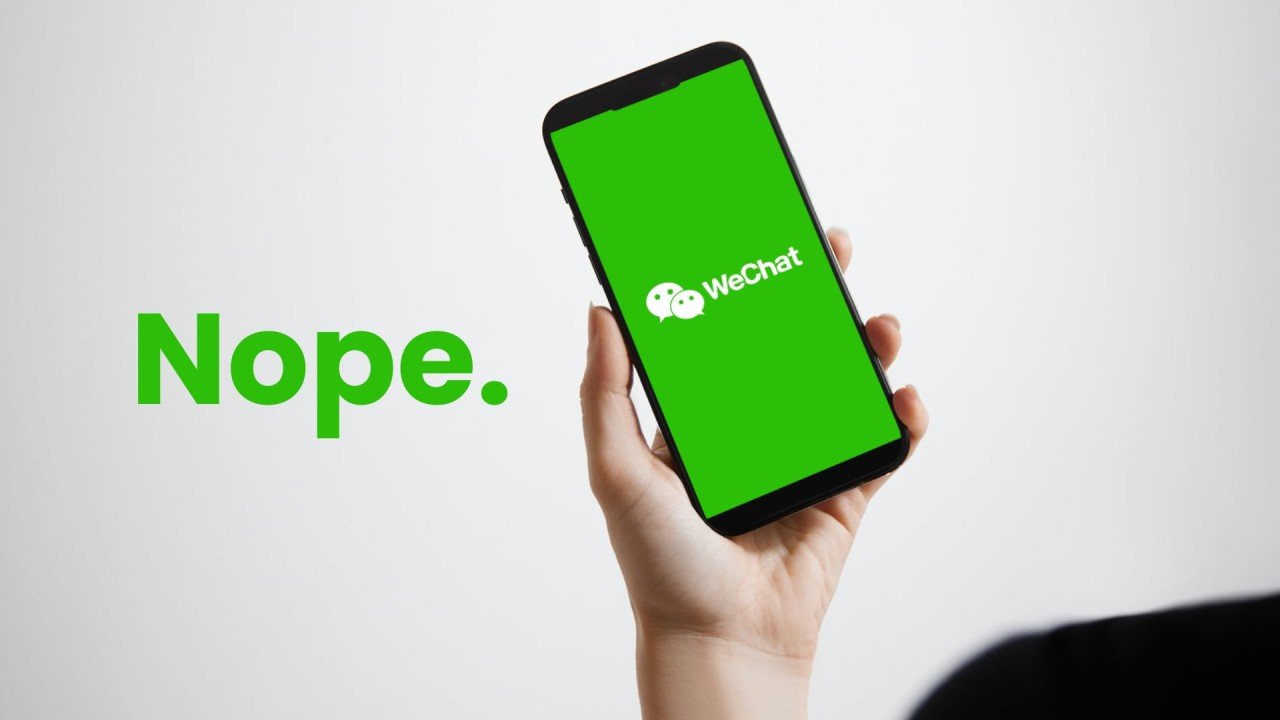Algorithmic vs. Subscriber Feeds
WeChat may not be the one for you
I recently attended an exhibition where I had the opportunity to speak with several companies interested in launching or improving their marketing strategies for China. During these conversations, WeChat came up repeatedly, with companies eager to launch their WeChat accounts. Interestingly, I often responded that perhaps they should forget about WeChat altogether. So, why would I turn down potential business?
WeChat WeChat WeChat
Many businesses seeking to enter the Chinese market are familiar with WeChat. They've heard about it in the news, from people like Elon Musk praising its super app status, or from marketing agencies highlighting it as the best platform for digital marketing in China. But is WeChat really the right choice for you?
WeChat's widespread use is its defining characteristic. Nearly everyone in China, except the youngest and oldest, uses it. Being on WeChat is practically a given in China. However, communication remains WeChat's primary function, despite its array of features. WeChat's core functionalities include messaging, payments, official accounts, and mini apps. For marketers, the focus is on the official accounts and their social media aspects. WeChat content is often extensive, text-heavy, and supplemented with images, contrasting with the short, video-and-picture-dominated content of other social media platforms. For many, WeChat functions as a news portal within a social media platform, a unique blend considering traditional websites are less popular in China.
Algorithmic Feeds vs. Subscription Feeds
Modern social media platforms like Little Red Book and Douyin use algorithmic feeds, similar to YouTube. Your homepage displays a curated mix of recommended content based on your viewing history and the accounts you follow. In practice, most of the content on your homepage are recommendations rather than posts from accounts you directly follow. This is great for discovering new content and products you didn't know existed.
In contrast, WeChat official accounts operate on a subscription model. Discovering an account on WeChat requires research or external referrals, making it more analogous to finding a new website or subscribing to a Substack newsletter. Not so easy, is it?
Here lies the problem. Whether you're a brand selling products or a destination aiming to attract visitors, you are inherently new and unknown to the people you're trying to target. Yet, you expect them to discover you on their own?! As online media have become increasingly saturated over time, this approach simply doesn't work anymore. Your WeChat efforts must be supported by other marketing strategies, or you're better off focusing your attention on other platforms.
To give you an example, in practice, you probably visit the same handful of websites and have been doing so for a long time. It's rare to add new sites to your regular rotation. Similarly, if you enjoy newsletters, you might subscribe to a bunch at once and then add few or none for years. This is exactly how WeChat official accounts today function.
What About Advertising?
Paid advertising on algorithmic platforms is relatively inexpensive because your content is seamlessly integrated into users' feeds alongside algorithmic recommendations. While WeChat is adding new advertising and visibility options, the space is limited and therefore more expensive.
As a result, growing an audience on WeChat official accounts is very challenging. However, the followers you gain are more engaged and genuinely interested in your content, providing long-term value that is hard to achieve on other platforms with more passive engagement. The impressions and engagement on WeChat cannot be compared to platforms like Douyin or Weibo, which display content and count impressions differently.
On Weibo, scrolling past your post on the homepage counts as an impression, while on WeChat, an impression requires users to click and view your post. This is the reason behind the large numbers often seen on Weibo. However, ask yourself, is the person who didn't even pause on your content any more likely to buy from you because of this? Not really. It may be good for brand exposure and a good opportunity to show your logo and name repeatedly, but you need to know what the numbers mean and not compare them directly to your WeChat engagement.
An Example
Two months ago, we launched a new suite of accounts for one of our customers. This included accounts on Little Red Book, Douyin, Weibo, and WeChat. The content we create is tailored for each platform, featuring longer articles on WeChat, images and videos on Little Red Book and Weibo, and videos on Douyin. The source content for all these platforms is the same. While paid ads are part of the plan, there has been zero paid promotion in the first two months. How did these accounts perform?
On the algorithmic platforms Little Red Book, Weibo, and Douyin, the worst-performing posts received 50-100 impressions. Average posts gained hundreds of impressions, while the best-performing posts received 10,000 to 20,000 impressions. Again, this was achieved without any paid ads and with zero prior followers on these accounts.
And how did WeChat perform? Posts there typically have dozens of impressions, with the best-performing posts reaching around 100 impressions (people who likely came because they saw the brand on the algorithmic platforms). Does this mean WeChat was a bad choice? Not necessarily. We knew WeChat would gather fewer impressions and followers, and the content we publish there is more in-depth, aimed at people interested in more detailed information than what is published on the other platforms. It's important to set expectations and content strategy accordingly.
Content Strategy and Platform Suitability
For WeChat, it’s essential to consistently provide fresh, valuable content that keeps your followers coming back. It’s ideal for sharing news, in-depth information, case studies (particularly for B2B businesses), and personal insights if you’re a blogger. But, if your content primarily focuses on repetitive sales pitches, WeChat may not be suitable. It’s crucial to differentiate between products that require new messaging and those that don't.
Algorithmic platforms, on the other hand, allow you to post the same content multiple times, reaching different audiences each time. This makes them ideal for expanding your reach with minimal cost.
Observations
If you're trying to attract tourists to your destination and have no other channels in China, WeChat may not be the most effective. Similarly, for brands, relying solely on WeChat may not be the best approach. However, for B2B businesses where customer relationships are cultivated over time, WeChat is an excellent choice.
Ten years ago, WeChat was the go-to recommendation for everyone. Today, things are more complex. A single WeChat follower holds greater value than hundreds or even thousands of followers on other platforms due to the depth of engagement on WeChat. Meanwhile, algorithmic platforms offer extensive reach at a lower cost, but with less engaged followers. Understanding the strengths and limitations of each platform is crucial for your marketing strategy.

